
- Shandong Loyal Industrial Co.,Ltd.
- Macaroni Production Machine Instant Noodle Machine Biscuit Making Machine
Home> Company News> Everything You Need to Know About Breadcrumb Crushing Machine

Everything You Need to Know About Breadcrumb Crushing Machine
2024-06-19 17:43:31Introduction to Breadcrumb Crushing Machines
Breadcrumb crushing machines are essential in the food processing industry, specifically designed to efficiently crush and process breadcrumbs used in various culinary applications. These machines play a crucial role in ensuring the uniformity and quality of breadcrumb products, meeting the demanding standards of modern food production.
Breadcrumb crushing machines are engineered with precision components and advanced mechanisms to handle large volumes of bread crumbs consistently. They are integral to the production line of facilities ranging from small bakeries to large-scale food processing plants. The primary function of these machines is to transform bread loaves or baked products into finely crushed particles, ready for use in recipes such as coatings for fried foods, toppings for casseroles, or fillers in meat products.
In industrial settings, the efficiency and reliability of breadcrumb crushing machines directly impact production output and product consistency. Manufacturers prioritize durability and hygiene, ensuring that these machines adhere to strict food safety regulations and are easy to clean and maintain.

History and Evolution of Breadcrumb Crushing Technology
Breadcrumb crushing technology has evolved significantly over the decades, driven by advancements in food processing and manufacturing. Initially developed to streamline the preparation of breadcrumbs manually, early machines were rudimentary and required considerable labor to operate. As the demand for processed food products grew, especially in commercial kitchens and food service industries, the need for more efficient breadcrumb crushing solutions became apparent.
The first significant advancements in breadcrumb crushing technology emerged in the mid-20th century, with the introduction of mechanical crushers powered by electric motors. These machines enabled faster processing of bread products, enhancing productivity while maintaining product quality. Early adopters in bakery chains and large-scale catering operations found these machines instrumental in meeting the rising consumer demand for consistent food textures and flavors.
Throughout the latter half of the 20th century, breadcrumb crushing machines underwent continuous refinement. Innovations focused on improving crushing precision, reducing energy consumption, and integrating automated features to minimize operator involvement. Manufacturers also introduced safety enhancements and materials compatible with stringent food safety standards, ensuring the machines could withstand rigorous cleaning protocols without compromising performance.
Today, breadcrumb crushing machines stand as a testament to the ongoing innovation within the food processing sector. They continue to play a pivotal role in ensuring consistency and quality across diverse culinary applications, from traditional recipes to contemporary food trends. As consumer preferences and industry standards evolve, breadcrumb crushing technology remains at the forefront of enhancing operational efficiency and meeting the dynamic demands of global food markets.
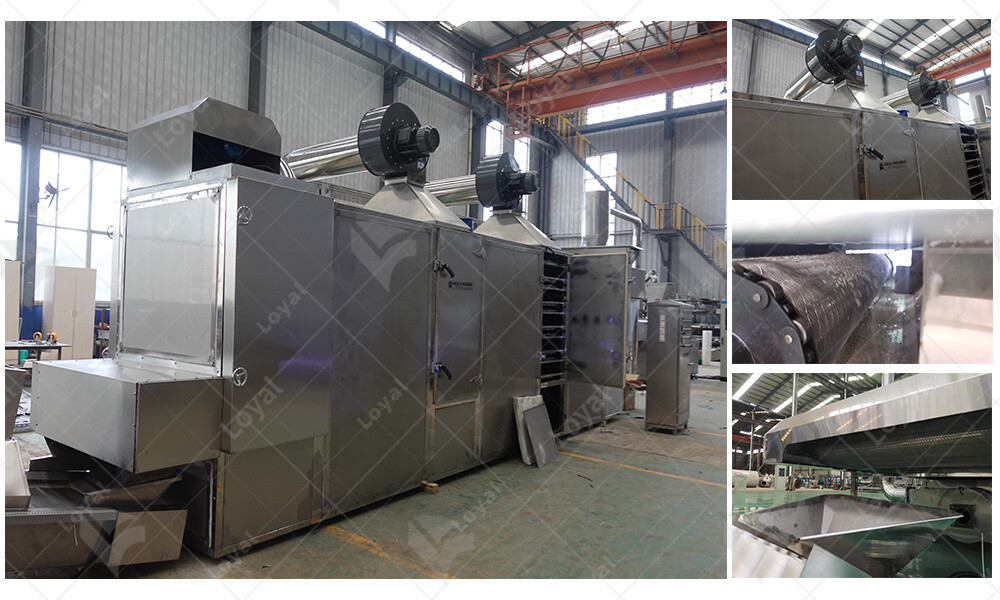
Key Components of Breadcrumb Crushing Machines
Breadcrumb crushing machines are intricate systems designed with several key components to ensure efficient operation in the food processing industry. These machines play a crucial role in the production of breadcrumbs, transforming stale bread into fine, uniform crumbs suitable for various culinary applications. Here are the primary components that make up a typical breadcrumb crushing machine:
Feeding Mechanism: The feeding mechanism of a breadcrumb crushing machine is responsible for continuously delivering stale bread or similar food products into the system. This component ensures a steady input of material for processing, optimizing throughput and efficiency.
Crushing Unit: At the heart of the machine lies the crushing unit, which typically consists of rotating blades or rollers. These components break down the bread into smaller particles, facilitating the creation of uniformly sized breadcrumbs. The design of the crushing unit is crucial to achieving consistent results in terms of texture and size of the final product.
Sieve or Screen: After the bread is crushed, it passes through a sieve or screen that separates the desired breadcrumb particles from larger chunks or debris. This component plays a critical role in quality control, ensuring that only particles of the correct size make it through to the next stage of processing.
Collection and Discharge System: Once the breadcrumbs are separated and sized appropriately, they are collected and discharged from the machine. This system may include conveyors, chutes, or bins designed to handle the processed breadcrumbs efficiently, ready for packaging or further processing.
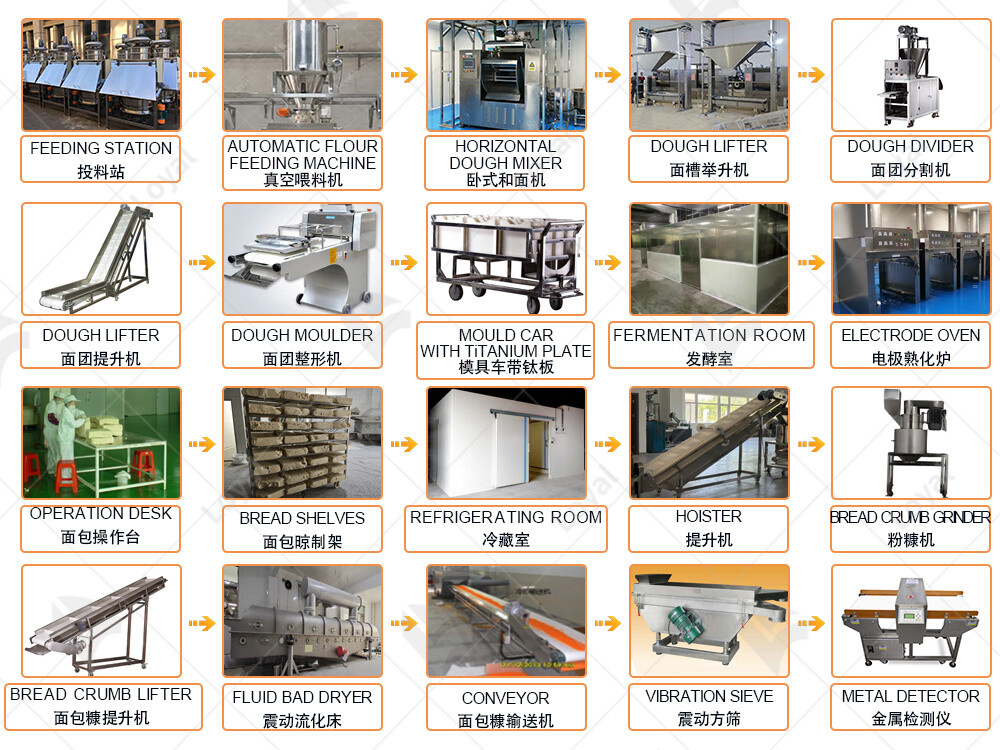
How Breadcrumb Crushing Machines Work
Understanding the operational dynamics of breadcrumb crushing machines is essential for optimizing their performance within food processing facilities. Here’s a detailed look at how these machines typically function:
Material Feeding: The process begins with the feeding mechanism introducing stale bread or similar materials into the machine. This can be manual or automated, depending on the specific design and integration with other production line components.
Crushing Process: As the bread enters the machine, it encounters the crushing unit, where rotating blades or rollers swiftly break it down into smaller pieces. This action is crucial for achieving the desired texture and consistency of breadcrumbs.
Sieving and Separation: Once crushed, the material passes through a sieve or screen that separates the fine breadcrumbs from larger particles or unwanted debris. This step ensures that only high-quality crumbs proceed further in the production process.
Collection and Packaging: The final stage involves the collection and discharge of the breadcrumbs into designated containers or packaging units. Efficient conveyance systems transport the processed breadcrumbs to their next destination, whether for immediate packaging or storage.
Breadcrumb crushing machines are integral to maintaining efficiency and consistency in breadcrumb production, catering to the demands of various food manufacturing operations. Their robust design and systematic operation underscore their importance in modern industrial food processing.
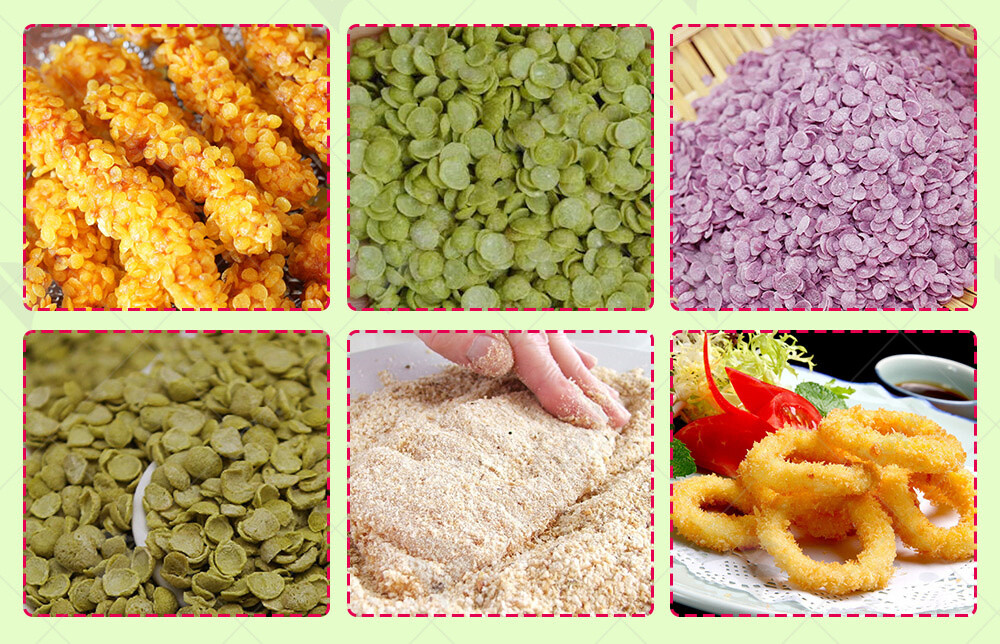
Types of Breadcrumb Crushing Machines
Breadcrumb crushing machines come in various types, each designed to cater to different industrial needs and production scales. The Breadcrumb Crushing Machine is a vital component in modern food processing facilities, ensuring efficient handling and processing of breadcrumbs.
Batch Breadcrumb Crushing Machines: These machines are ideal for smaller-scale operations where batches of breadcrumbs are processed intermittently. They are compact, easy to operate, and suitable for bakeries or small food production units.
Continuous Breadcrumb Crushing Systems: For larger-scale production needs, continuous breadcrumb crushing systems offer continuous operation. They are designed to handle high volumes of breadcrumbs efficiently and are commonly found in large-scale industrial food processing plants.
Customizable Breadcrumb Crushing Machines: Some manufacturers offer customizable options to tailor breadcrumb crushing machines to specific production requirements. This flexibility ensures that the machine can meet unique processing needs, such as varying breadcrumb sizes or specific throughput capacities.
Automated Breadcrumb Crushing Machines: In recent years, automation has transformed food processing. Automated breadcrumb crushing machines integrate advanced controls and sensors to optimize the crushing process, ensuring consistent quality and minimizing manual intervention.
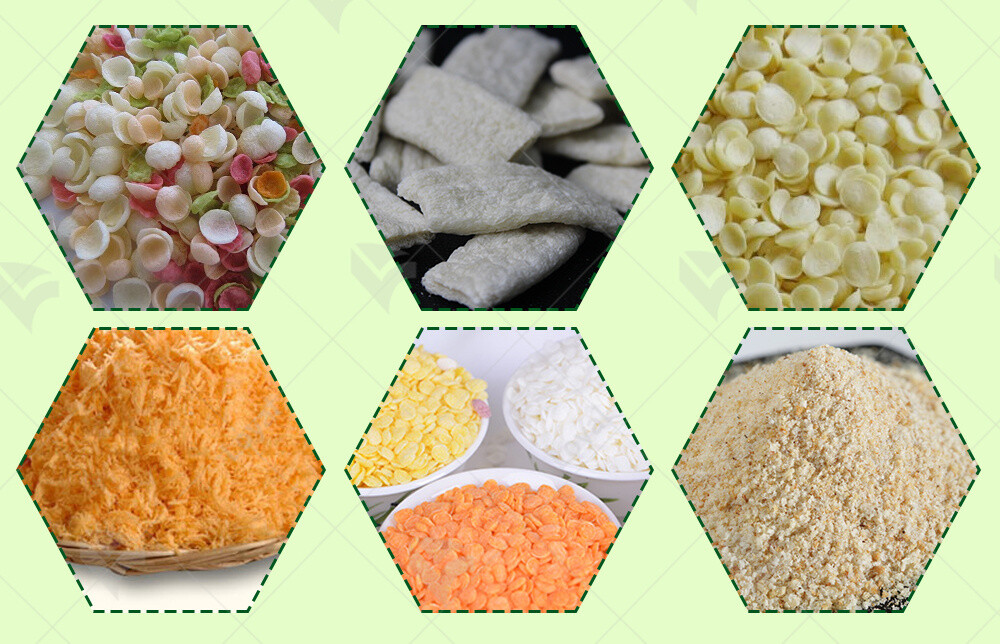
Installation and Setup of Breadcrumb Crushing Machines
Installing and setting up a Breadcrumb Crushing Machine is crucial to its performance and longevity. Proper installation not only ensures operational efficiency but also minimizes downtime and maintenance costs over the machine's lifespan.
Location and Space Requirements: Before installation, consider the machine's footprint and operational space requirements. It should be placed in a well-ventilated area with adequate clearance around it for maintenance and safety purposes.
Power and Utility Connections: Verify that the electrical and utility connections meet the machine's specifications. Breadcrumb crushing machines often require specific voltage and power configurations to operate effectively. Ensure that all connections are secure and comply with safety standards.
Setup and Calibration: Once installed, the machine needs to be calibrated according to the desired breadcrumb size and production capacity. Follow the manufacturer's guidelines for setting up the crushing blades, adjusting throughput settings, and configuring any automation features.
Testing and Commissioning: Before full-scale production, conduct thorough testing and commissioning procedures. This involves running the machine with sample batches of breadcrumbs to ensure proper functionality, quality output, and adherence to production standards.
By understanding the types and proper installation of Breadcrumb Crushing Machines, food processing facilities can maximize efficiency, maintain product quality, and meet the demands of modern food production standards effectively.

Maintenance and Troubleshooting Tips
Maintaining optimal performance of Breadcrumb Crushing Machines is crucial for ensuring seamless operations in food processing facilities. Regular maintenance not only extends the lifespan of these machines but also enhances efficiency. Here are essential maintenance and troubleshooting tips:
Routine Lubrication: Proper lubrication of the machine components is paramount to prevent frictional wear and tear. Use food-grade lubricants as recommended by the manufacturer. Pay particular attention to the bearings and moving parts to maintain smooth operation.
Cleaning Regimen: Regular cleaning of the crushing chamber and conveyor belts is necessary to prevent buildup that can affect performance. Use gentle cleansers to remove breadcrumbs and other debris. Ensure all parts are thoroughly dried before reassembly to prevent corrosion
Inspection of Wear Parts: Periodically inspect wear parts such as blades, hammers, and screens for signs of wear. Replace these components promptly if they show excessive wear to maintain consistent crushing quality and prevent unexpected breakdowns.
Troubleshooting Common Issues: Familiarize yourself with common issues like motor overheating, uneven crushing, or conveyor jams. Refer to the manufacturer's troubleshooting guide for specific solutions. Addressing issues promptly minimizes downtime and production delays.

Safety Guidelines for Operating Breadcrumb Crushing Machines
Operating Breadcrumb Crushing Machines requires strict adherence to safety protocols to protect personnel and maintain operational efficiency. Here are key safety guidelines to follow:
Training and Certification: Ensure operators undergo comprehensive training on machine operation, safety procedures, and emergency protocols. Certification should be regularly updated to encompass new safety standards and machine modifications.
Machine Guarding: Install robust safety guards around moving parts such as conveyors, blades, and hoppers to prevent accidental contact. Guards should be inspected regularly for integrity and promptly replaced if damaged.
Personal Protective Equipment (PPE): Mandate the use of appropriate PPE, including safety goggles, gloves, and hearing protection, when operating or maintaining the machine. PPE minimizes the risk of injury from flying debris, noise, or chemical exposure.
Emergency Stop Procedures: Clearly mark and educate operators on the location and use of emergency stop buttons. These buttons should instantly halt machine operation in case of imminent danger or malfunction, allowing for swift intervention.
By adhering to these maintenance and safety guidelines, operators can ensure the efficient and safe operation of Breadcrumb Crushing Machines in industrial food processing environments. Regular maintenance not only enhances machine longevity but also upholds the highest standards of operational safety.
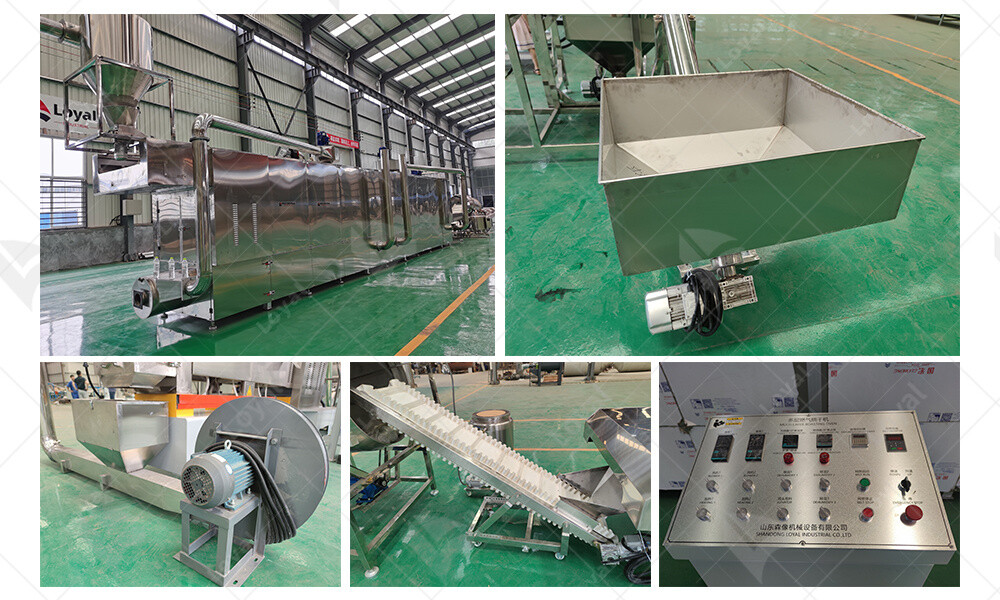
Energy Efficiency and Environmental Impacts
The Breadcrumb Crushing Machine has seen significant advancements in energy efficiency in recent years. Modern machines are designed with state-of-the-art motors that consume less power while maintaining high performance. This reduction in energy consumption not only lowers operational costs but also minimizes the carbon footprint of the production process, making these machines a more sustainable choice for manufacturers.
Additionally, the Breadcrumb Crushing Machine incorporates energy recovery systems that capture and reuse excess energy generated during operation. These systems help further reduce overall energy consumption, contributing to a more efficient production cycle. By implementing such technologies, manufacturers can achieve significant savings in energy costs while promoting environmental sustainability.
Another crucial aspect is the machine's capability to operate with minimal waste. The Breadcrumb Crushing Machine is engineered to crush breadcrumbs with high precision, ensuring that nearly all the input material is converted into the desired output. This efficiency reduces waste and contributes to a more environmentally friendly production process, aligning with global efforts to reduce industrial waste.
Moreover, the design of the Breadcrumb Crushing Machine often includes eco-friendly materials and components that can be recycled or disposed of with minimal environmental impact. This consideration extends the machine's eco-friendly credentials, making it a responsible choice for businesses aiming to reduce their environmental footprint while maintaining high production standards.
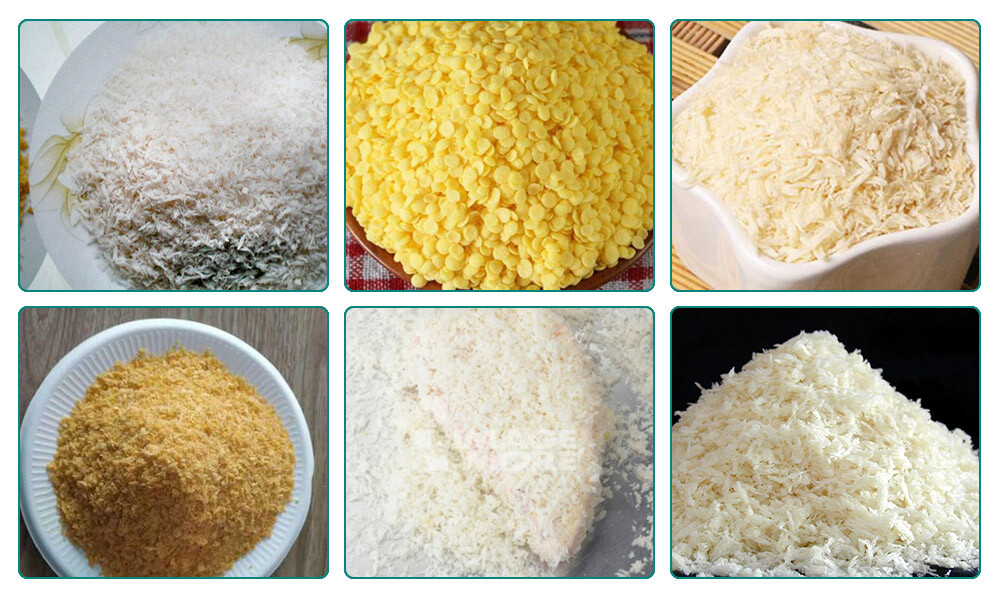
Innovations in Breadcrumb Crushing Machines for 2024
The Breadcrumb Crushing Machine market is poised for exciting innovations in 2024, driven by advances in technology and changing industry demands. One of the most notable innovations is the integration of smart technology. These new machines will feature advanced sensors and IoT connectivity, allowing for real-time monitoring and adjustments to enhance performance and efficiency.
Another significant innovation is the development of more compact and modular designs. The latest Breadcrumb Crushing Machine models will offer greater flexibility and ease of maintenance. Their modular nature allows manufacturers to easily upgrade parts or expand their systems as needed, without the need for extensive downtime or complex reconfigurations.
Automation is also a key trend in 2024. The new Breadcrumb Crushing Machine models will incorporate more automated features, reducing the need for manual intervention and decreasing the likelihood of human error. This automation not only boosts productivity but also ensures a consistent quality of crushed breadcrumbs, meeting the high standards required in the food industry.
Lastly, innovations in materials and construction techniques will lead to more durable and long-lasting Breadcrumb Crushing Machines. These machines will be built with advanced alloys and composites that offer superior resistance to wear and tear, ensuring longevity and reliability even in high-demand environments. This durability not only extends the machine's lifespan but also provides better value for investment, making it a smart choice for forward-thinking manufacturers.
Reference
1.Baker Perkins - bakerperkins.com
2.GEA Group - gea.com
3.Heat and Control - heatandcontrol.com
4.Hosokawa Micron - hosokawamicron.com
5.Fritsch Group - fritsch-group.com
 Commercial Japanese Panko Bread Crumb Grinder Machine
Commercial Japanese Panko Bread Crumb Grinder Machine Japanese Bread Crumbs Processing Line
Japanese Bread Crumbs Processing Line Automatic Cookies Making Machines
Automatic Cookies Making Machines Fully Automatic Biscuit Making Machines
Fully Automatic Biscuit Making Machines